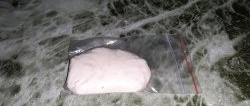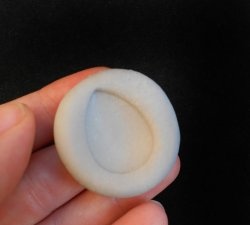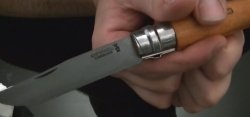What you will need
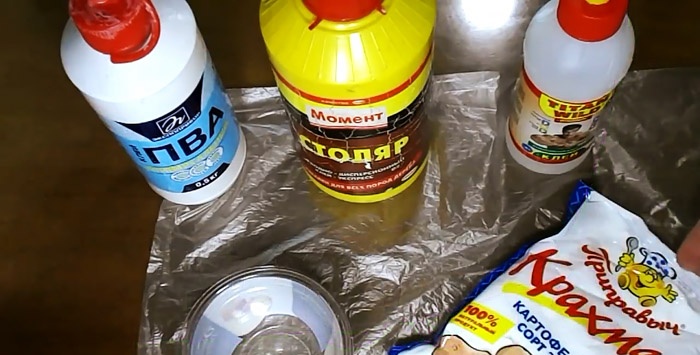
It is necessary to prepare potato starch for the main filler, ordinary PVA glue, PVA wood glue and Titan glue as binders. To knead the mass, you need to have a small plastic container, maybe a glass. Experiments are carried out using pliers, a needle file and a drilling machine.
Operating procedure
There are many different recipes for making plastic (cold porcelain) on the Internet; it is difficult to understand which one is better. It is better to compare in practice, which is why we will prepare the three most common compositions.
For convenience, pour the starch from the pack into a container of appropriate volume.
Pour 2-3 teaspoons of starch into a small plastic cup to prepare the first batch, add some simple PVA glue to it.
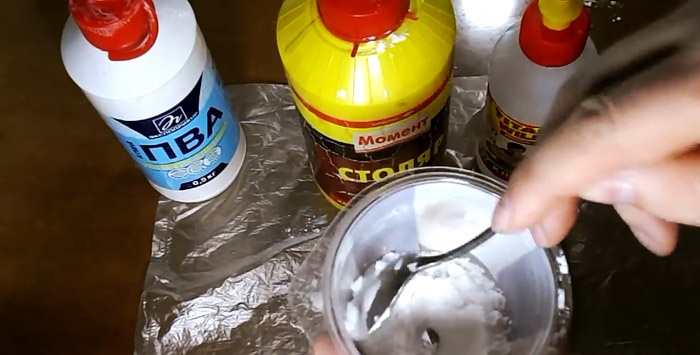
You don’t need to pour a lot at once, it’s better to add more as needed.
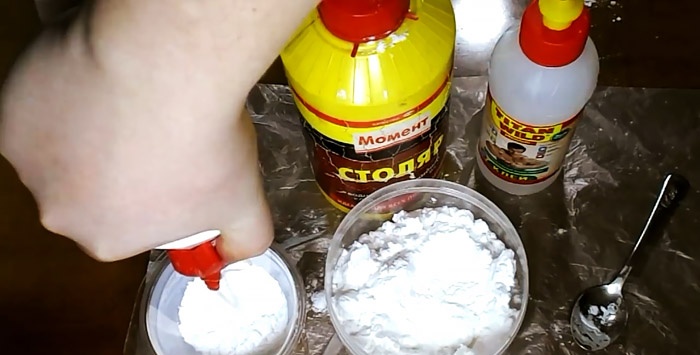
Start mixing with a teaspoon, the composition should be homogeneous.Glue or starch is added as needed. As it thickens, it becomes more and more difficult to work with a spoon; remove the mixture from the container and continue stirring with your fingers.
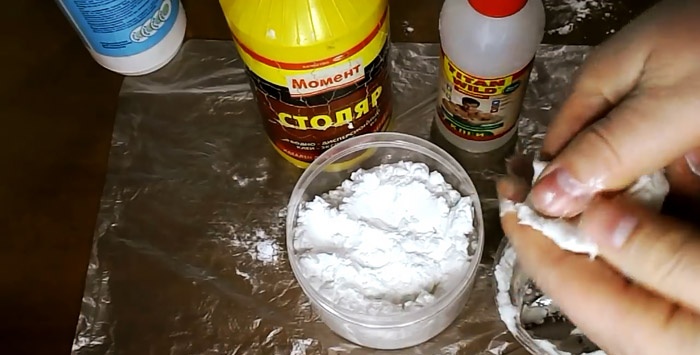
The mass should be the same as the dumpling dough. Roll it out into a pancake about 5 mm thick and leave it on the table. After each kneading, do not forget to wash your hands; water-based adhesives are made with water and are easily removed.
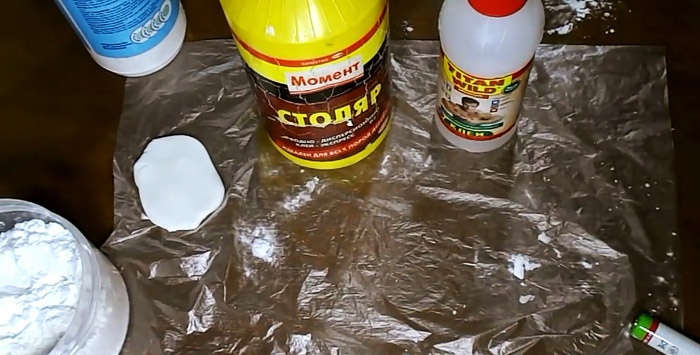
The same mixture should be prepared using PVA wood glue. Differences will already appear - the mass is more rigid, it is a little more difficult to roll it into a thin layer.
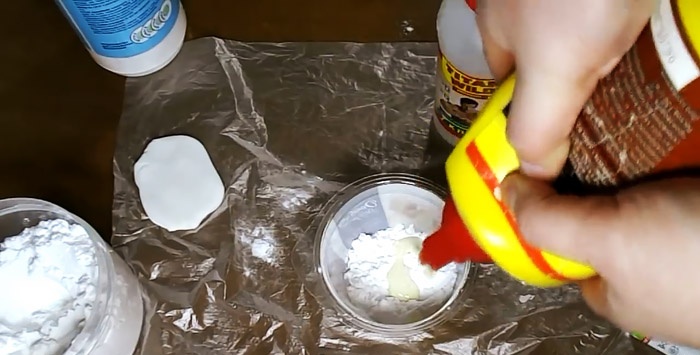
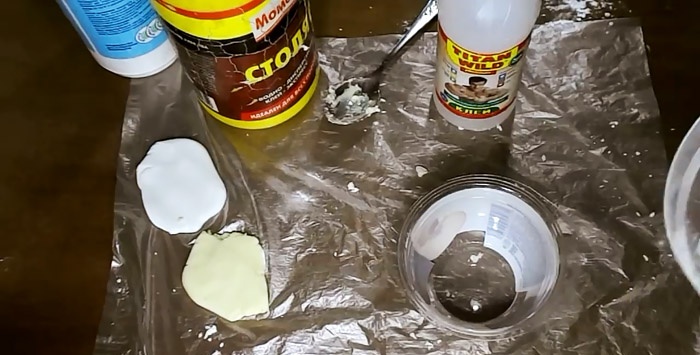
Now mix the starch with water-insoluble Titanium. The process is no different from the above.
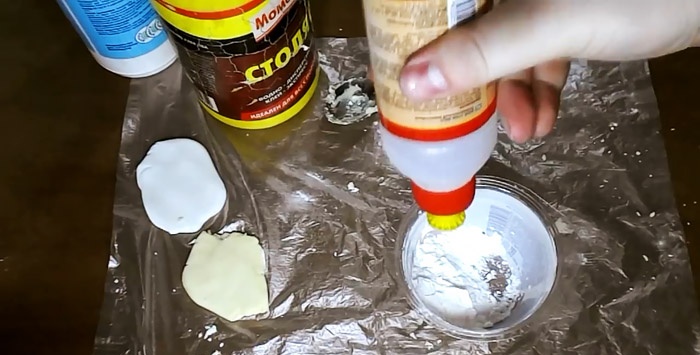
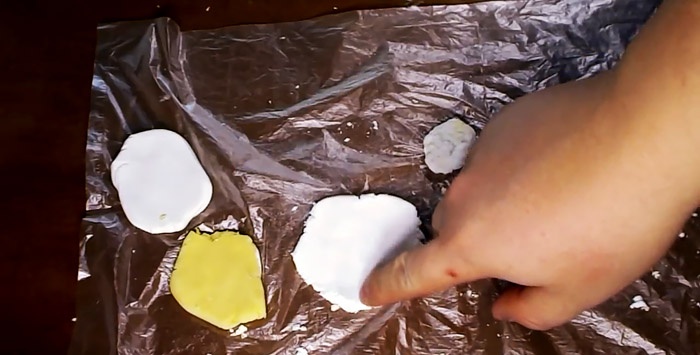
All samples should be thick; if too soft, they will crack as they dry due to shrinkage. In our example, only plastic with ordinary PVA glue had such a drawback; the rest dried without cracks.
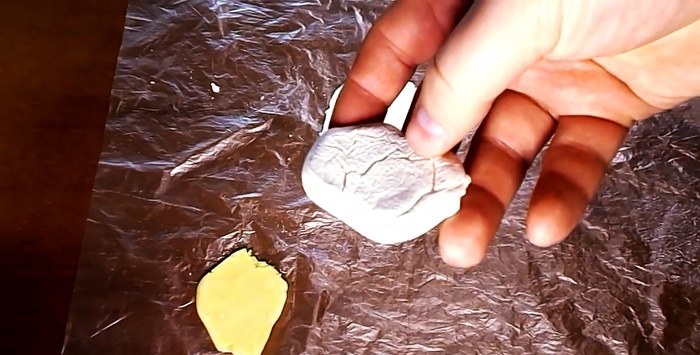
Make another cake from the remaining starch, but now add water to it. You will also need it for experience. After 4 hours, the pancakes are still not salted; leave them for three days.
Tests
First, you should check the materials for hardness; to do this, you should cut them a little with a needle file.

The hardness of plastic with PVA is normal, the cake is sawed perfectly and does not crumble. The starch could not stand up to the water and immediately began to crumble.
The version with wood glue also has excellent hardness and can be processed without problems.
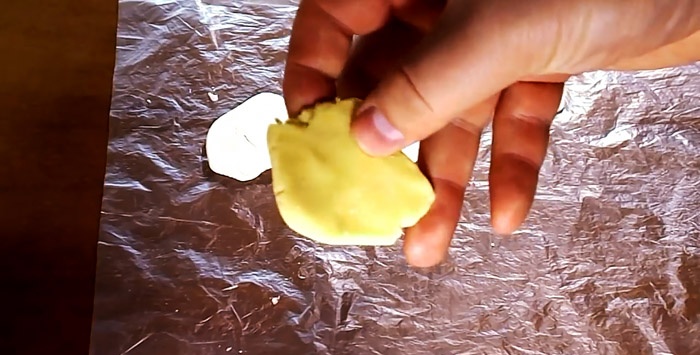
The version with Titan glue can be processed and is almost no different from the two with PVA glues.
Drilling holes - testing for ductility
The sample on water is drilled without any effort, there are no chips, only dust.
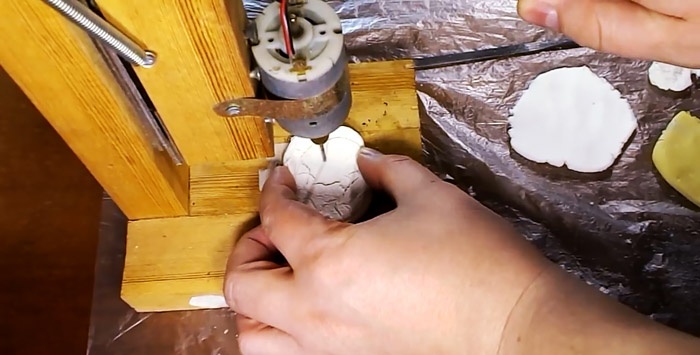
All others are plastic, curled chips appear. The sample with wood glue has the highest hardness and ductility; the chips are wound around the drill.
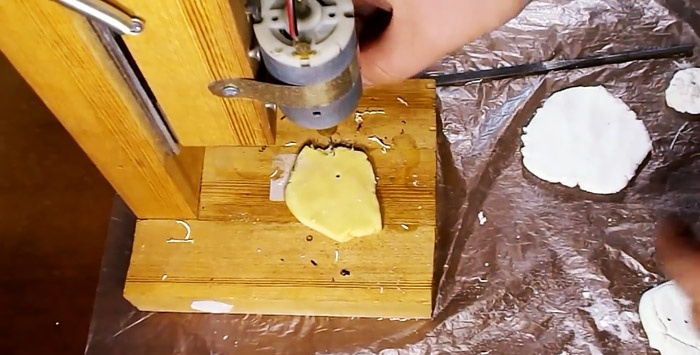
Now you should check the samples for bending resistance

Using pliers, bend all the cakes one by one. The sample on water breaks very easily, as you would expect.
A little more force must be applied when breaking a sample with PVA, but the parameters are insufficient. The reason is a significant number of microcracks throughout the entire volume.
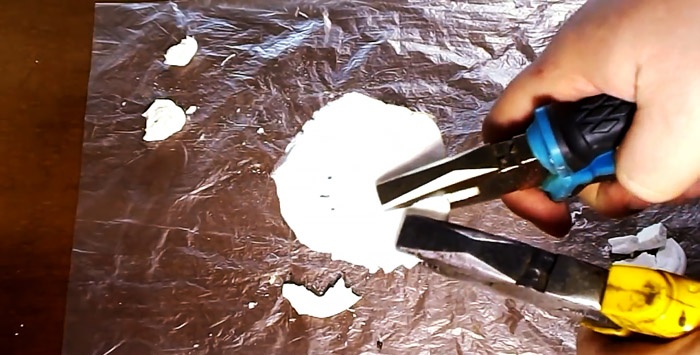
The sample with Titanium breaks with force; at the break, the structure resembles natural porcelain. The plastic is light and durable, quite suitable for use.
The most difficult thing to break is a piece of wood glue.
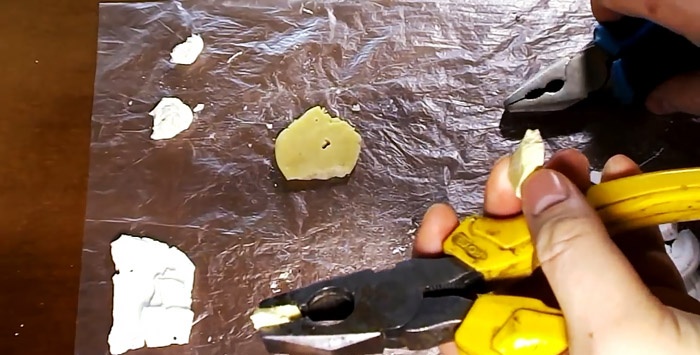
As studies have shown, the sample with wood glue has proven itself best, with Titanium filler in second place. But you need to keep in mind that it takes more time for wood glue to completely harden. It is not recommended to prepare plastic for crafts from ordinary PVA glue.
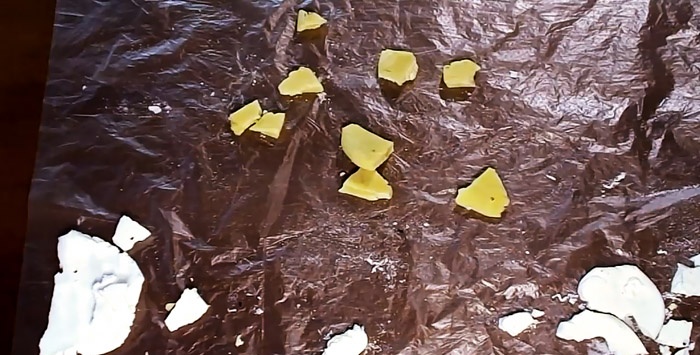
Conclusion
In all physical parameters, the first place is confidently taken by a composition with PVA wood glue, but the material has a yellowish tint, which is not always convenient. If you need to have durable white, then it is recommended to use PVA glue with a plasticizer as a binder. The starch does not have to be potato starch; you can also use corn starch. Despite the fact that these are elementary tests, the result can be taken into account.



